Shotgun Shells Explained – Types Of Ammo (Birdshot, Buckshot, Slugs)
Shotgun Shells Explained – Types Of Ammo (Birdshot, Buckshot, Slugs)
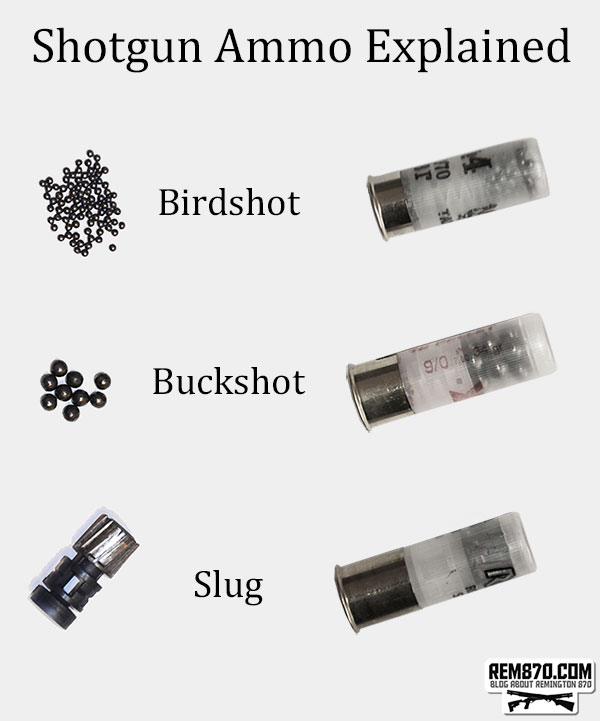
Shotgun Ammunition Explained
Shotgun gauge. What is the difference between 12 gauge and 20 gauge shells?
The most common shotgun ammunition is the 12 gauge and the 20 gauge. The gauge is the diameter of the bore, which is the hollow part of the barrel. Shotguns come in different size gauges which determine the size of its ammunition. The 12 gauge has a diameter of 18.5 mm, or .729 inches. The 20 gauge has a diameter of 15.6 mm, or .62 inches. This makes the 12 gauge bigger than the 20 gauge. Do not try to mix the 12 gauge shells with a 20 gauge gun, or vice versa, because it could damage the weapon as a result.
Now when it comes to the ammunition and the shooting experience of each one, you have to consider the recoil and the number of spherical projectiles from the shells. A 20 gauge shell will contain less gunpowder, which means it won’t recoil as much when fired. A 12 gauge shell contains more gunpowder, so it will have a lot more recoil. Remember that recoil is the kickback you get from firing a weapon. If you are delicate or have poor balance then you might want to stick with the 20 gauge shotgun.
The part where people get confused is about the number “12” and 20.” If a 20 gauge is smaller than a 12 gauge, then what does the 20 signify? Well these numbers actually refer to the number of solid spherical balls the same diameter as the inside of the barrel that can be made from one pound of lead. In a 12 gauge, 12 lead balls can be made from one pound of lead. In a 20 gauge, 20 lead balls can be made from one pound of lead.
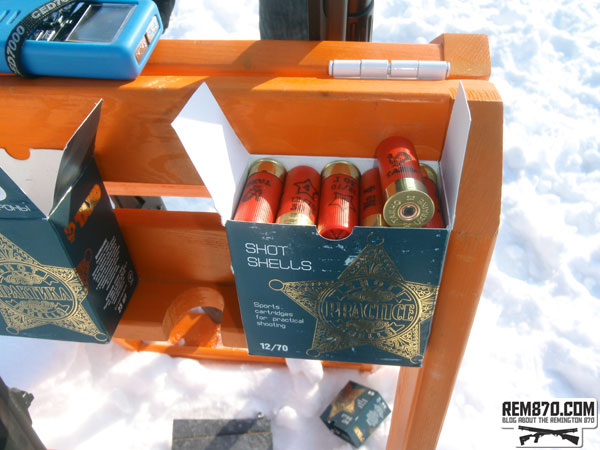
Shotgun Shells
12-Gauge
The 12-gauge is the larger of the two with a bore diameter of 0.73 inches/18.5 millimeters. The
range is usually longer and it will have greater recoil. The 12-gauge is chosen for migratory bird
hunting and skeet shooting because of its range. Physically smaller individuals may find the
recoil is not tolerable. The recoil can be considerable for anyone when using certain shells. This
is something that must be considered for extended hunting trips. People that seem to be able to
tolerate the recoil on the practice range may find it more difficult as the hunting trip gets longer
and as they use various sized loads.
If there is more than one person in the home that may use a shotgun as a home defense weapon
you must consider the recoil. Young adults and others must be able to tolerate the recoil of a 12
gauge otherwise, you would need to have a 20-Gauge available or have both weapons available
for use.
Because of the heavier loads in a 12-gauge you have to know the damage the loads will do to
small game such as rabbits and squirrels. The heavier loads may very well destroy the animal to
the point where they cannot be used as a food source and the skins would be unusable as well.
The standard 12-gauge load is 1 1/8 ounces of shot. You can load 1 ¼ as well for longer range
and heavier birds but once again the recoil with the heavier load will be considerable for some
individuals. Because the heavier loads carry more pellets, avid bird hunters choose the 12-gauge
because more pellets mean more contact with the bird.
20-Gauge
The bore diameter of a 20-gauge is 0.615 inches/15.6 millimeters. The weapon is used for bird
hunting, hunting in general and for skeet shooting. The range according to some is more than
adequate for most bird hunting to include duck hunting. The weapon is also an ideal home
defense shotgun, and typically, in home defense range is not a critical factor. Many hunters will
choose a 20-gauge over a 12 based on the recoil and lightweight especially when they expect to
cover a lot of terrain daily.
The standard shot load for a 2-guage is 7/8 ounces and you can load one ounce shot up to 1
ounces. The range for the 1 ounces for a 20 gauge will be less than the same sized load in a
12-gauge. For home defense many use the heavier loads in their 20-gauage for stopping power
without the recoil associated with the 12-gauge.
Shotgun gauge sizes
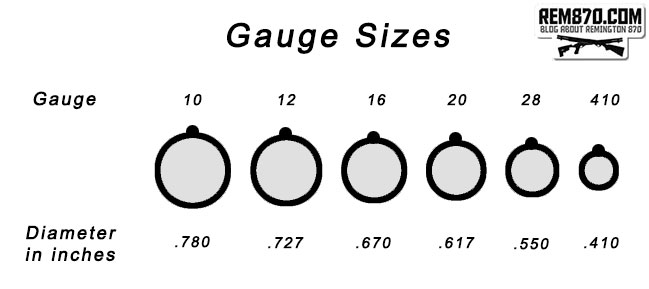
How the Different Shotgun Rounds Work (Birdshot, Buckshot, Slug)
I think it is important to know how different shotgun ammunition works, so you can choose the one you need at the moment. Knowing what it can and what it can’t do is very important.
First of all, let me share with you one good photo which shows series of individual 1/1,000,000 second exposures showing shotgun firing shot & sabot separation:

Shotgun Shot Sequence (Author: Andrew Davidhazy)
What is chamber length? Can you shoot 2.5 shell in a 3 inch chamber?
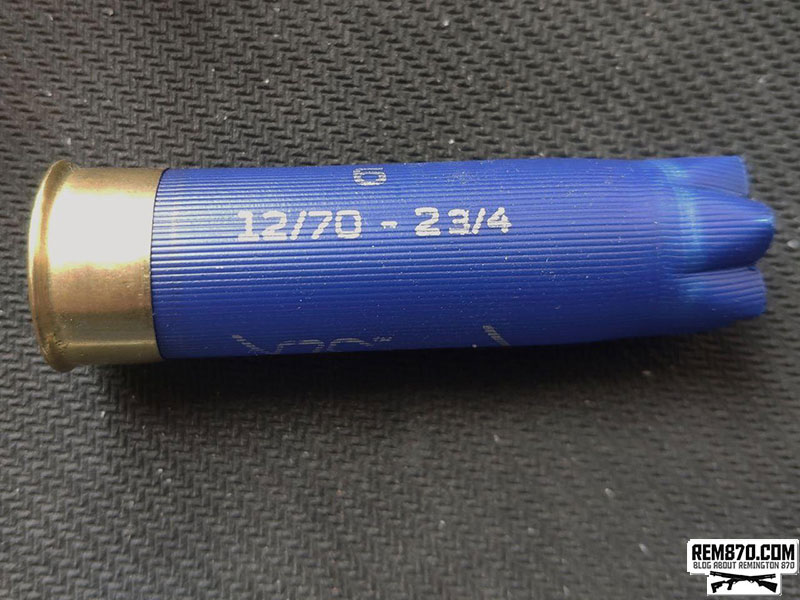
The chamber of the shotgun is the part of the barrel that the shotshell sits in.
First of all, shotshells are measured fired. And yes, you can shoot 3 inch ammo and any other shotshells below 3 inches using 3 inch chamber shotgun. You can shoot a 2.5 shotshell in a 3 inch chamber, but you cannot use a 3 inch round in a 2.5 inch chamber. You can use shorter cartridges but not longer ones. It is very dangerous loading a shotshell that is too big for a chamber. Even if it looks that round fits into a chamber it will open when fired and pressure may be too big and may lead to damage of the shotgun and may cause injuries to a shooter.
The longer the shotshell the more shot and powder it may contain. Magnum and Supermagnum shotshells are usually longer than standard rounds.
The standard lengths are 2-3/4 inches (65mm), 3 inches (76.2mm), and 3-1/2 (89mm) inches.
It is very important to know the chamber size and buy ammo of proper length.
How to find out the size of a shotgun chamber?
Usually it is stamped on shotgun’s barrel and it is easy to find it.
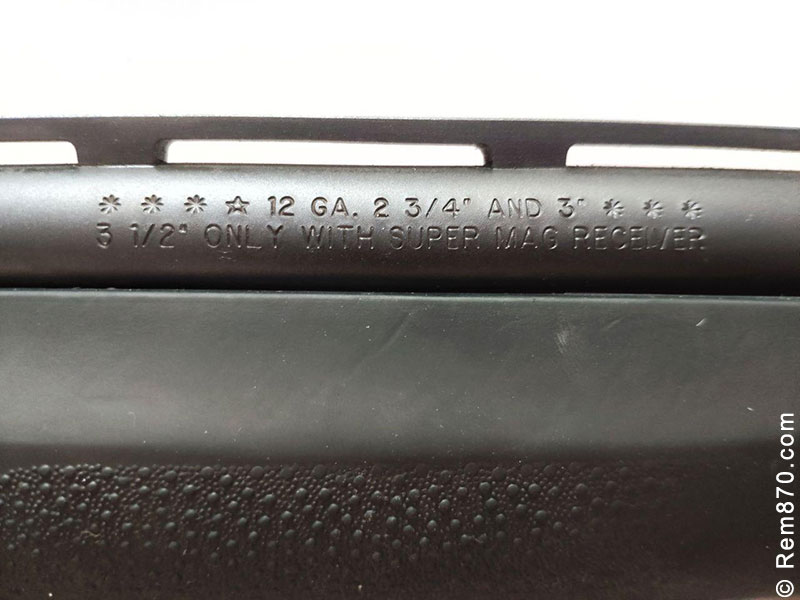
How to find out the size of a shotgun ammo?
It is indicated on box and a shotshell itself.
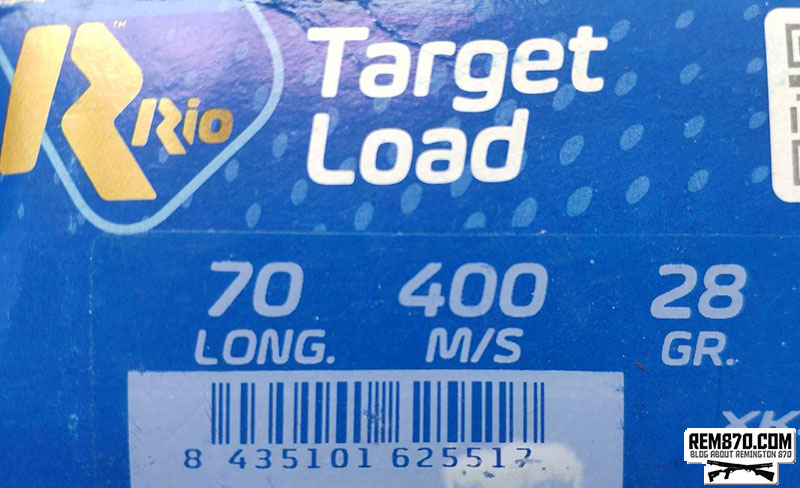
What is birdshot? What sizes of shot exist?
Birdshot is a type of shotgun ammunition that is designed for hunting birds in the wild. Inside the shotgun shell contains tiny metal spheres that are all the same size. This allows them to be packed together nicely into a shell, so that many pellets can fit in there. Once the shell full of pellets is loaded into the shotgun and fired out, the pellets separate from the shell and spread outwards.
This is what is known as a birdshot because the spreading of the pellets makes it easier to hit a flying target, such as a bird. Birdshot contains the smallest pellets out of all the other shotgun ammunition types. They also cause the least amount of damage because of their small size, but they are still strong enough to kill birds and small animals. However, the birds don’t always die right away if there are not enough pellets in the gun to destroy them. Hunters that are looking for trophies will typically fill their shells up with fewer pellets in order to weaken the effect on the targeted bird. This results in the bird being immobilized and suffering to death from its injury. Many critics of birdshot call it inhumane for the animals because it doesn’t always kill them right away. But, tell that to former Vice President Dick Cheney.
You might be familiar with birdshot because of the incident that happened back in 2006 with Vice President Cheney. He was hunting quail with another hunter while carrying a shotgun loaded with birdshot shells. When he fired the gun he accidentally shot the other hunter, but fortunately he was not severely injured. The main reason why the victim survived was because of the birdshot shells. This ammunition was not meant for bigger mammals, like humans. They are only meant for birds, so the shells were not strong enough to kill him. If they were a buckshot or slug then it might have been a different story.
Birdshot is the smallest type of shotgun pellets. It is typically used by hunters who want to shoot birds or other flying wildlife. Inside a birdshot shell are small steel or lead spheres that scatter outward once it is fired from the shotgun. The more metal spheres, or pellets, that get packed into a shell the more the pellets will scatter around the target area. The reason why this type of ammunition works best for shooting birds is because it is easier to hit them with it. After all, birds fly in the air pretty fast which makes them a difficult target to hit. If you were to use a rifle to try and hit them then it would be impossible because rifles are only useful for precision hits. It would be luck to aim at a moving bird and hit them precisely dead center with your bullet. But with a birdshot, the pellets that scatter around the targeted area will help ensure that you land a hit on the bird as it is flying. In other words, you don’t have to be 100% accurate in order to land a hit.
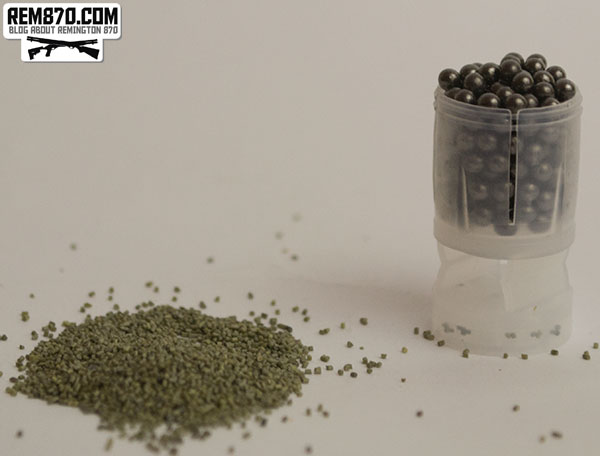
Sellier & Bellot Practical Sport Shotgun Birdshot
Birdshot sizes are similar to how shotgun gauges are measured, but they use different terminology. The one thing they have in common though is that the larger the number, the smaller the shot; and vice versa. When you refer to a birdshot you would say something like a “number 2 shot” or a “number 10 shot.” The number 2 shot would contain 87 lead pellets per ounce, while the number 10 would give you 848 lead pellets per ounce. As you can see, the higher number contains more pellets. These higher numbers are better for shooting at close up targets because the more pellets you have the farther they will scatter as they travel through the air. The lower numbers, like the number 2, would be better for long range shotgun shooting.
Birdshot sizes
| US Size | EU Size | SW Size | UK Size | AU Size | Nominal diameter | Pellets per oz (28 g) | Quantity per lb. | |
|---|---|---|---|---|---|---|---|---|
| Lead | Steel | |||||||
| FF | .230″ (5.84 mm) | 35 | ||||||
| F | .220″ (5.59 mm) | 27 | 39 | |||||
| TT | .210″ (5.33 mm) | |||||||
| AAA | .205″ (5.20 mm) | |||||||
| AAA | .203″ (5.16 mm) | 35 | ||||||
| T | AAA | .200″ (5.08 mm) | 36 | 53 | ||||
| AA | .191″ (4.93 mm) | 40 | ||||||
| BBB | AA | .190″ (4.83 mm) | 44 | 62 | 550 | |||
| BB | A | .180″ (4.57 mm) | 50 | 72 | 650 | |||
| Air Rifle | BBBB or 2/0 |
.177″ (4.50 mm) | ||||||
| B | .170″ (4.32 mm) | 86 | ||||||
| No.1 | BB | BB | .160″ (4.06 mm) | 72 | 103 | 925 | ||
| No.1 | 7 | .158″ (4.00 mm) | ||||||
| No.2 | B | .150″ (3.81 mm) | 87 | 125 | 1120 | |||
| No.2 | 6 | .148″ (3.75 mm) | ||||||
| No.3 | .140″ (3.56 mm) | 108 | 158 | 1370 | ||||
| No.3 | 5 | .138″ (3.50 mm) | ||||||
| No.2 | No.2 | .134″ (3.40 mm) | ||||||
| No.4 | .130″ (3.30 mm) | 135 | 192 | 1720 | ||||
| No.4 | 4 | No.3 | No.3 | .128″ (3.25 mm) | 140 | |||
| No.5 | No.4 | No.4 | .120″ (3.05 mm) | 170 | 243 | 2180 | ||
| No.5 | 3 | .118″ (3.00 mm) | ||||||
| No.6 | No.5 | No.5 | .110″ (2.79 mm) | 225 | 315 | 2850 | ||
| No.6 | 2 | .108″ (2.75 mm) | ||||||
| No.5½ | No.5½ | .107″ (2.72 mm) | 240 | |||||
| No.6 | No.6 | .102″ (2.59 mm) | 270 | |||||
| No.7 | .100″ (2.54 mm) | 291 | 423 | |||||
| No.7 | 1 | .098″ (2.50 mm) | ||||||
| No.7½ | .094″ (2.40 mm) | |||||||
| No.7½ | No.7 | No.7 | .095″ (2.41 mm) | 350 | 490 | 3775 | ||
| No.8 | No.7½ | .090″ (2.29 mm) | 410 | 686 | 5150 | |||
| No.8 | 00 | .089″ (2.25 mm) | ||||||
| No.8 | No.8 | .087″ (2.21 mm) | 472 | |||||
| No.8½ | .085″ (2.15 mm) | 497 | ||||||
| No.8½ | .083″ (2.10 mm) | |||||||
| No.9 | No.9 | No.9 | .080″ (2.03 mm) | 585 | 892 | 7400 | ||
| No.9 | 000 | .079″ (2.00 mm) | ||||||
| No.10 | .070″ (1.78 mm) | 848 | ||||||
| No.10 | No.10 | .070″ (1.78 mm) | 850 | |||||
| No.10 | .069″ (1.75 mm) | |||||||
You don’t have to limit your target to just birds though. Some people use birdshots for hunting rabbits and squirrels as well. Pretty much any small animal will be good enough for birdshot. If you are trying to kill a bigger animal, like a bear or deer, then you would need a more powerful type of ammunition because birdshot would only wound the animal rather than kill it. That is why it is important that you get familiar with birdshot so that you understand what kind of impact it can have on these animals.
What shot for what game?
| Game | Lead/Tungsten | Steel |
|---|---|---|
| Pheasant | 4 to 6 | 2 to 3 |
| Turkey | 4 to 6 | 2 to 3 |
| Quail, dove, | 7½ to 8 | |
| Rabbit | 6 to 7½ | |
| Squirrel | 6 | |
| Geese | 2 to BB | 1 to TT |
| Ducks, low | 4 to 6 | 2 to 4 |
| Ducks, high | 2 to 4 | 2 to BB |
If you are new to shotgun ammunition then you can purchase birdshot shells directly from your local hunting supply store. You can also buy the pellets and empty shells separately if you are confident enough to prepare them on your own. Of course, you must abide by your jurisdiction’s laws surrounding the use of hunting in your area and using birdshot ammo. Even though birdshot is not necessarily deadly to people, you should always avoid shooting someone with birdshot because it could still cause permanent injury.
See also: Shotgun chokes explained
What is slug? What types of slugs are there?
Slugs are the most powerful type of shotgun ammunition that you can purchase. Its projectiles are made of lead or filled with lead covered in copper. Sometimes they have a plastic tip which inflicts additional cuts and damage into the target. If you want to go hunting and kill a deer with one shot then slugs are definitely the best ammo. You can also make the slugs less lethal if you use rubber material for the bullets instead of lead. There are so many different ways you can design slugs if you know how to make them. If you don’t then you can purchase a variety of slug types from your local hunting store, such as wad slugs, wax slugs, brenneke slugs, cut shell slugs, foster slugs, steel slugs and plumbata slugs. They all inflict a different level of damage onto the intended target based on the material of the tip.
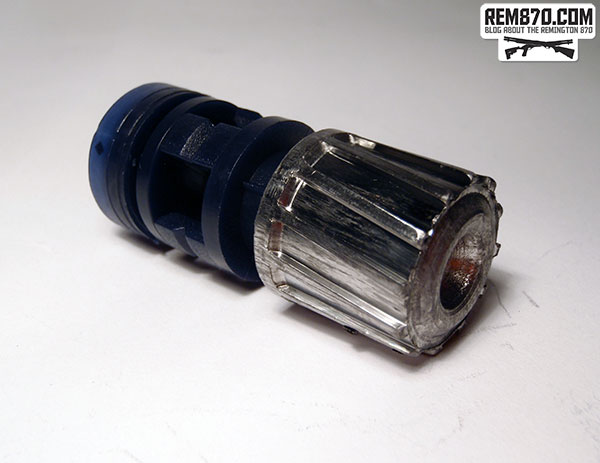
RC TIRO A PALLA Shotgun Slug
Slugs are different than birdshot and buckshot shells because they are actually bullets. The other two are just metal pellets inside of a shell that burst out when fired. When you shoot a shotgun filled with slugs, it will fire single direct projectiles that go straight into the target just like a normal bullet. You can stand as far as 75 yards from your target and hit it straight on with slugs. You wouldn’t be able to do that with buckshot or birdshot because the pellets scatter as soon as they come out of the barrel. Slugs will provide a much cleaner kill because it will go straight through the skin and puncture the internal organs of the target.
Anyone who uses slugs is looking to kill something quickly and from far away. However, hunters are not often permitted to use slugs because local governments don’t want hunters being too far away from their target when they shoot. This increases their risk of shooting another person who might accidentally cross paths with the line of fire. If someone were to get shot with a slug then it would either kill them or cause permanent damage. Therefore, hunters are typically restricted to buckshot and birdshot ammunition. If you want to use slugs then a gun firing range would be more appropriate. Since it is a single shot bullet, it won’t spread around and shoot off target like with the buckshot and birdshot. So they are safer to bring to a firing range.
What is buckshot? What types of buckshot exist?
Buckshot is shotgun ammunition that uses large metal pellets in the shotgun shells. When the buckshot is fired from the shotgun the pellets scatter outward just like the birdshot. The only difference is the buckshot does more damage than the birdshot because it uses larger pellets. The bigger the pellets, the more impact it will have on the target. That is why buckshot is typically used to hunt bigger animals than birds, such as deer. It can do enough damage to actually kill a bigger animal, instead of just wounding it. You could use buckshot on a bird, but it would blow it to smithereens. Hunters typically like to keep their prey intact after they kill it, which is why birdshot is used with smaller animals and birds.
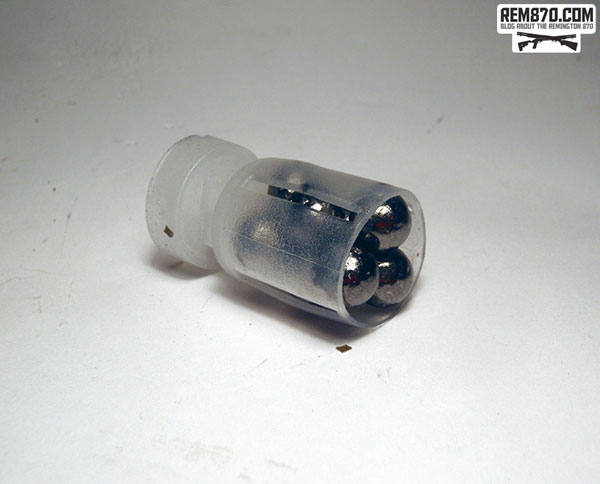
Takho Ukraine Buckshot
Buckshot can also be used to kill bears as well, although most jurisdictions have laws against hunting bears. But if you are in the woods and a bear tries to attack you, then the buckshot will certainly stop them. You may not have the same luck with a birdshot though, so always be ready.
The unique thing about buckshot is that you can prepare the lethality of the shells. In other words, you can customize the shot to either kill the animals or just wound them to the point where they will stop running. Sometimes hunters don’t like to use too many pellets because it will make a mess of the deer’s face and body. These are the kinds of hunters that like to keep trophies of their prey. In the case of deer, they typically cut their heads off after they are dead and hang them on the wall. The small sized buckshot would be appropriate for this purpose. Either way, hunters need to stand far away when shooting with the buckshot because a close range target will get obliterated.
Buckshot is the standard type of shotgun ammunition that hunters use. You will find most hunting lodges permitting the use of this kind of shotgun ammo. However, buckshot can be extremely dangerous if you are not careful. Seasoned hunters will typically wear bright orange clothing in order to signal to other hunters that a person is nearby. Otherwise, if you are in the woods with camouflage or traditional clothing then you are liable to get shot by a hunter with the buckshot. Remember the shot spreads in multiple areas so you don’t even have to be in the line of fire to get shot. All you have to be is hanging around the general area and you will get hit by the pellets. So just stay behind the hunter and know which direction they are going.
The size of buckshot is referred to be a number or letter. The smaller numbers contain bigger size metal pellets while the larger numbers contain smaller pellets, but in bigger quantities. This is similar to the birdshot and gauge systems of measurement where large numbers mean smaller pellets, and vice versa. But with buckshot, the largest pellets are typically labeled as #000. This buckshot has 6.2 pellets per ounce, but their diameter is 9.1 mm. As you go to the smaller size pellets, you have #00, #0, #1, #2, #3, and so on. Obviously, the more pellets you have in the gun the more spreading that will occur. The neat thing about modern day shotguns is that the choke tubes are interchangeable, which means you can change how the pellets spread when they come out of the gun. However, not all shotguns allow you to modify the choke. Many shotguns will come with a fixed choke, which means you have to adapt to the spread that it gives you.
Shotgun Buckshot Pattern Test
It is very important to check pattern of your shotgun, especially if you have fixed choke. This is important for home defense and for competition shooting.
If you don’t know the pattern of your shotgun you can hit penalty target during the competition or hit the person you don’t want to hit during home defense. But also, during the test you will find out how do you need to aim on different distances, the longer the distance the less you need to aim using buckshot.
Here is sample buckshot pattern test (Rio Royal Buck):
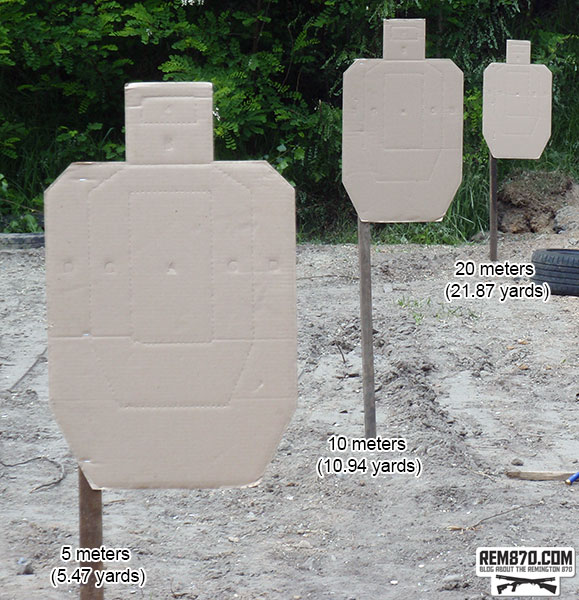
Shotgun Buckshot Pattern
As you can see, on 5 meters the pattern is pretty tight and you need to aim at this distance even if it looks close.
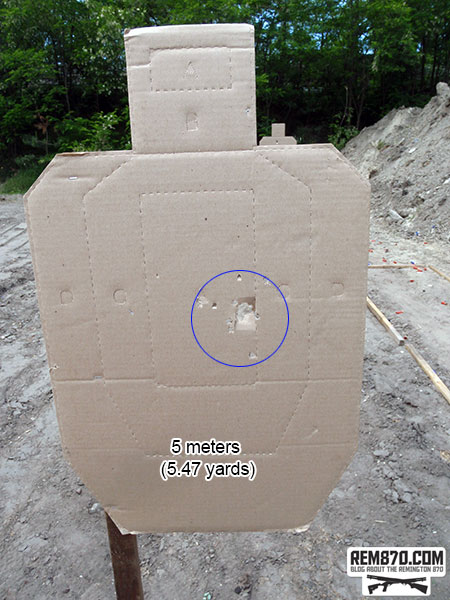
Shotgun Buckshot Pattern – 5 Meters
On a distance of 10 meters the pattern is not that tight and you can hit the target easily.
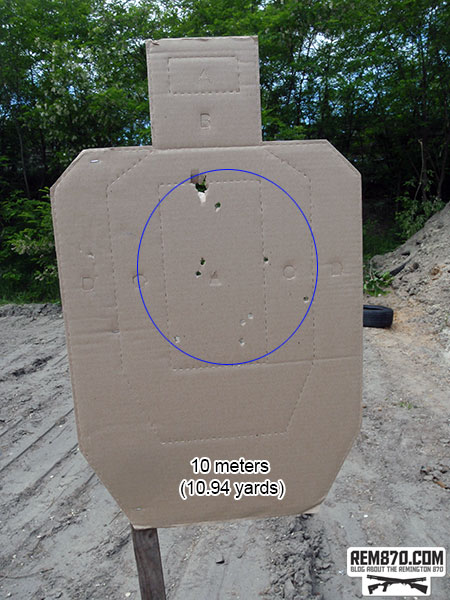
Shotgun Buckshot Pattern – 10 Meters
It is important to be extremely accurate on a longer distances because it is easy to hit wrong target with several pellets.
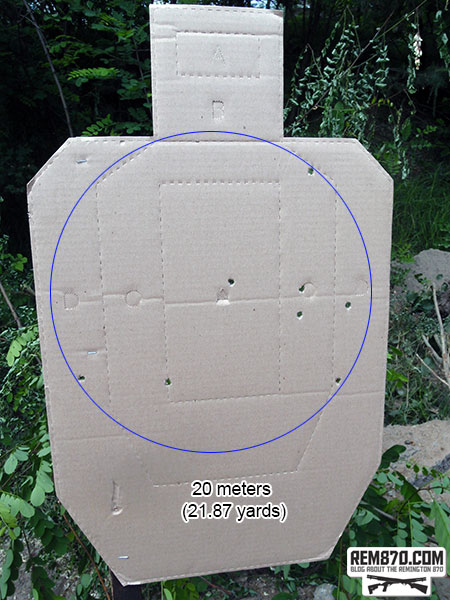
Shotgun Buckshot Pattern – 20 Meters
See also: Shotgun chokes explained
Buckshot sizes
| US Size | UK Size | AU Size | Nominal diameter | Pellets/oz (28 g) | |
|---|---|---|---|---|---|
| Lead | Steel | ||||
| Tri-Ball 12 [12 Gauge] | 0.60″ (15.2 mm) | 1.4 | |||
| Tri-Ball 20 [20 Gauge] | 0.52″ (13.2 mm) | 2.1 | |||
| #000 Buck (“triple-aught”) |
LG | .36″ (9.1 mm) | 6.2 | ||
| MG | .346″ (8.79 mm) | 7 | |||
| SG | .332″ (8.44 mm) | 8 | |||
| #00 Buck (“double-aught”) |
00-SG | .330″ (8.38 mm) | 8 | ||
| #0 Buck (“single-aught”) |
.32″ (8.1 mm) | 9 | |||
| #1 Buck | .30″ (7.6 mm) | 11 | |||
| Special SG | .298″ (7.57 mm) | 11 | |||
| #2 Buck | SSG | .27″ (6.9 mm) | 14 | ||
| SSG | .269″ (6.83 mm) | 15 | |||
| #3 Buck | .25″ (6.4 mm) | 18 | |||
| SSSG | .244″ (6.3 mm) | 20 | |||
| #4 Buck | .240″ (6.10 mm) | 21 | |||
| SSSSG | .227 (5.77 mm) | 25 | |||
| F | .22″ (5.59 mm) | 27 | 39 | ||
| SSSSS or AAAA |
.213 (5.41 mm) | 30 | |||
| AAA | .203″ (5.16 mm) | 35 | |||
| T | .200″ (5.08 mm) | 36 | 53 | ||
If you want your buckshot to be more accurate then you should use shotgun with #000 buckshot. If you want to target a wider range then use a #4 buckshot. The type of buckshot you use depends on the animal you are hunting and the distance you plan to hunt it. There are also low recoil buckshot shells available now that reduce the kickback of the shot, since buckshot is more powerful and usually gives a greater kickback than birdshot. Look for the low recoil shells the next time you are in the gun store looking for buckshot ammunition.
Shotgun shells of what length exist?
Shotgun shells come in all different lengths. The way you measure the length of a shell is by measuring the length of the spent hull. With shell length, you use inches to measure it instead of millimeters like you would with the bore’s diameter. However, some shells that come out of Europe still use millimeters for both the bore’s diameter and shell length. The most common shell lengths are 2 ¾ inches, 3 inches and 3 ½ inches. A 12 gauge shotgun will usually be able to handle shells of these lengths (but be sure to check this). There are also shells that are called magnum shells because they contain more gunpowder in them than your average shell. This means they do more damage to its target. Magnums are also longer than regular shells as well.
When you go to shop for ammunition you need to know the correct length and gauge of the shells you are looking for. The manufacturer’s manual for your shotgun should tell you all of the information you need to know about what kind of shells you need. The main difference between longer shells and shorter shells has to do with the amount of pellets/gunpowder it can hold. Obviously, if you have a longer shell then you will be able to hold more pellets, which means you will have a much wider spread when you shoot the shell in your shotgun. On the flip side, shorter length shells will have fewer pellets in them. But the true benefit of using longer shells has to do with fitting more big pellets into it. With standard size shells, putting bigger pellets in the shell means there are fewer pellets in the shell. So if you have a longer shell then you can fit more of the bigger pellets in them. That way you can do even more damage on a wider scale after the shots scatter all over the place.
You might think that smaller length shells are weaker, but this is not always the case. Many slugs are made with small length shells because they only contain a single metal projectile that resembles a bullet. So you should take that into consideration as well when evaluating various types of ammunition for yourself.
What is Shell Length – 2.5″, 2.75″, 3″, 3.5″?
Remember that advertised shell length – 2.5″, 2.75″, 3″, 3.5″ – refers to the unfolded length of the shotshell after it’s been fired. Before firing, a shotshell will almost always be shorter due to the crimped front end. Shotgun chambers are sized to fit the shell in its unfolded state to provide the the payload with a straight path into the barrel, so there’ll be extra room in front of an unfired shell that’s the same length as the chamber.
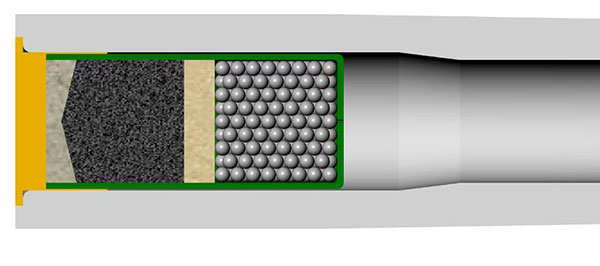
Shotshell and Chamber
Shotgun shells – what is high brass shell? What is low brass shell?
In modern times, there is really no difference in performance between high brass shotgun shells and low brass shotgun shells. People used to claim that high brass shells travel farther than low brass, but this is just a myth. Back in the old days, the hulls of shells used to be made out of paper instead of plastic. This paper would burn easily from the ignition of the gunpowder. High brass shells were eventually created in order to prevent the paper of the shell from being burnt after pulling the trigger of the gun. Now days there are plastic hulls that have replaced the paper ones, which prevent it from getting burned. However, the shells manufactured today still come in high brass and low brass with the plastic hulls attached to them. High brass is typically advertised to consumers as having more power, but most gun experts will tell you that this is a big scam. The power of high brass will be just as good as the power of low brass. If there is any difference at all it likely has to do with the amount of gunpowder that is in the shell. High brass shells, like magnum shells, are typically advertised as having more power because they have more powder in them. With more powder, you can also shoot at greater velocities. So if you are hunting birds that fly high above you then high brass shells might be more appropriate.
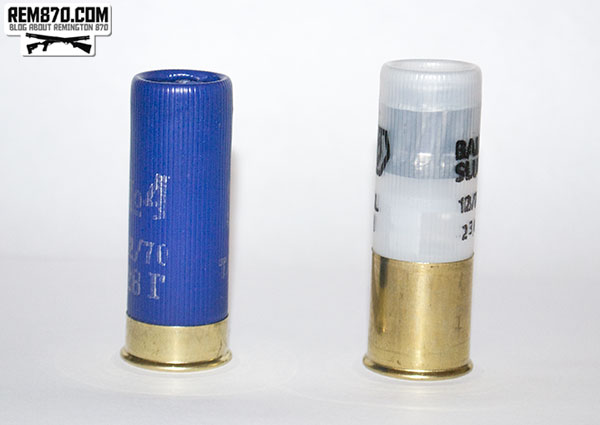
Low brass, high brass shotgun shells
Another possible difference between low brass and high brass might be found with auto loading shotguns. Some gun owners who have auto loading shotguns claim that low brass shells do not cycle through the gun like high brass shells. In this situation it really depends on the type of shotgun that you have. People claim to have difference experiences when it comes to the loading and cycling of high brass shells. If you are someone who likes to reload their own shells then you might find low brass easier to reload as well. Talk with your local gun shop dealer to find out more information about cycling. Either that or just experiment with low and high brass shells to see how they work with the various shotguns that you own. Low brass shells are about 33% cheaper than high brass shells. So if money is an issue for you, then go with low brass simply for economic reasons.
Effective Ranges for Buckshot, Birdshot and Slugs
The effective range or kill range is not the same thing as the actual range of the round. When out hunting you certainly do not want to waste rounds firing at targets too far away. If you are using buckshot, it may only wound the animal you are firing at and the animal may not ever bleed out. First, however make sure you know what your pattern is at various ranges. Buckshot at 35 yards is probably the effect range for deer hunting. You can of course strike the target at greater distances 50 to 75 yards but you are not as likely to have a kill shot.
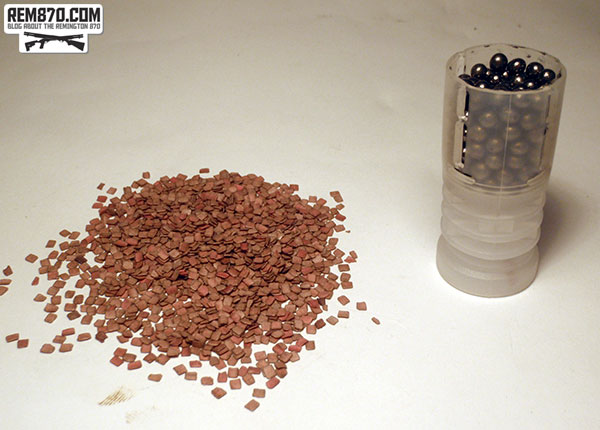
Turkish Yavascalar Shotgun Ammunition
Some use buckshot for their home defense weapons and at close range buckshot is devastating but it may penetrate doors and walls causing injuries to others in the home. Effect range is typically not an issue when using buckshot in your home defense shotgun.
Birdshot
Most hunters use the 40/40 method, which is a 40-inch spread at 40 yards. Forty yards is likely the maximum effective range of birdshot. This of course depends on the choke setting, steel or lead shot and so forth. However, using the 40/40 method you know the spread is 40 inches at 40 yards. Beyond 40 yards, you can of course make a kill but you will not have the full impact on the bird. You also have to consider the size of your bird. You want to avoid spreading shot where it injuries other birds.
Birdshot is also used for home defense because at close range it will put anyone down. The shot is not as likely to penetrate walls and doors causing injuries to others. However, at very close range birdshot will penetrate certain doors and walls. Once again, for home defense effective range is usually not an issue.
Slugs
A smooth bore slug barrel is usually capable of 3 to 4 inch groups at 50 yards with standard manufacturer’s ammunition. Providing of course you have practiced and know your weapon. This means the effect range is probably somewhere around 75 yards. This range is more than adequate particularly in areas that ban high-powered/longer range hunting rifles because of population density.
Rifled barrels will have a much greater effective range because of the rifling. The 3 to 4 inch group is easily accomplished at 100 yards with a rifled barrel. The effective range is somewhere around 125 yards. Some.45 caliber and .50 caliber Sabot rounds claim to have an effective range of up to 200 yards.
The effective ranges are only averages and much depends on weather conditions, ammunition and your shooting skill. Keep in mind the effective range is not how far the round will travel but how effective it is at a particular range. Any round can travel a significant distance and injure someone, depending on terrain and other conditions.
Always know your target before shooting and know what is beyond the target. You have to assume for safety sake that you may miss so you need to know where your round is likely to travel too.
Slugs are not a typical home defense load because of the penetration. A slug can easily travel through doors and walls to injure someone in the home or even in the neighborhood.
The Best Shotgun Ammo for Home Defense: Buckshot, Birdshot, Slugs?
A novice shotgun user might think that shotgun ammo is all the same. They figure you just purchase shotgun shells from the store, load them in the shotgun, and then fire. Now it is true that all shotguns are predominately a short range weapon that can do loads of damage to your target. However, the type of ammo in your shotgun will be helpful in the amount of damage you want to do versus the preciseness of your aim.
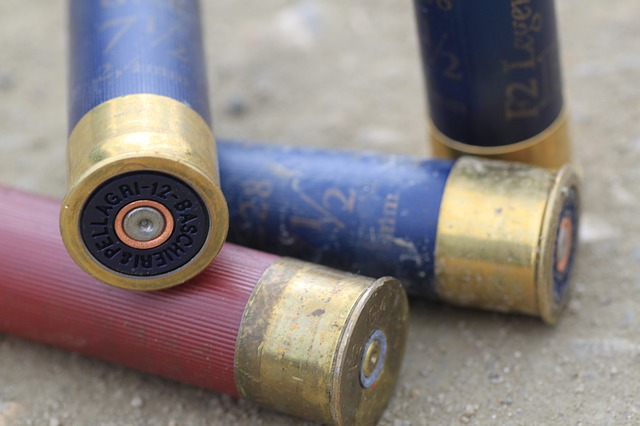
The Best Shotgun Ammo for Home Defense
There are three types of shotgun ammunition; buckshot, birdshot and slug. The best type of shotgun ammunition for home defense is buckshot. These are basically large lead balls inside shells that get loaded into the shotgun. Most people use buckshot for hunting big animals, but they are suitable for self defense purposes as well. The standard buckshot has eight .36 inch diameter balls, but they go up to 27 .24 inch diameter balls. The bigger the balls, the more damage the buckshot will do to your target. As for birdshot, these are shells filled with small pellets in them. Normally people will hunt birds and small animals with birdshot ammunition in their shotgun. However, it has great stopping power and it will be able to incapacitate any intruder from up to 30 feet away. Finally, slugs are shells loaded with solid lead bullets with grooves on the sides. If you seriously want to destroy your target and cause the most damage then slugs are the way to go. Slugs are also very accurate when fired. You can shoot a target up to 75 yards away and still keep up a reasonable amount of accuracy.
Any one of these three shotgun ammunition types will be sufficient for stopping an intruder. It’s not like there is one that won’t do any damage. Remember, this is a shotgun! No matter which ammunition you use to shoot your target, it will cause serious injury or death to the person when used up close. But if you have a lot of property and are thinking that you’ll need something better for longer range then look into purchasing birdshot or slugs. Remember though that you should never shoot someone running away from you. The legal consequences of shooting someone in the back are quite severe. So only shoot someone long range if they are hurting someone else or trying to shoot at you from far away. Otherwise, stick with some simple buckshot and shoot the intruder when they come into your home.
Low Recoil Shotgun Loads
Low recoil loads or sometimes called “managed recoil target loads” are ideal for practice shooting, skeet and trap. Some manufactures claim that the recoil is reduced up to 40 percent in some 12-gauge loads.
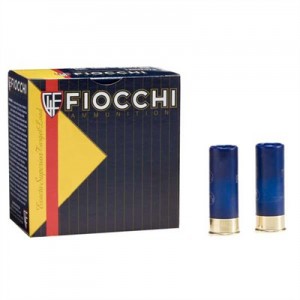
Low Recoil Ammunition
Typically, the shot pattern is the same, and the shells can be reused for loading at home. The shells are made of plastic and assumedly because of the lower recoil; the hulls would have more longevity. Low recoil loads are ideal for new shooters or those that simply cannot handle the recoil of a 12-gauge with standard sized loads. The shells are relatively inexpensive and many shooters use them specifically for target practice where they expect to do a lot of shooting in one day, and of course, the low recoil allows them to shoot for longer periods
where otherwise with heavier loads they could not.
Over time, some shooters can develop a flinch and by using the low recoil loads, they can train themselves out of this habit. Older shotguns can benefit from lighter loads because many of the older guns were not designed to take the stress of heavier loads such as magnum shells. Using the low recoil loads makes some of the older weapons safer to use in some cases. Lighter loads are available in slug and buckshot, as well. The buckshot will still have the typical nine pellets.
The standard load in ounces for a 12-gauge would be 1 ¼ at 1,250 feet per second (fps), whereas a low recoil load would be around 1,125-1,200 fps at approximately 7/8 ounces. Certain other shells are loaded so the fps is between 900 and 980. The recoil is light to non-existent. The low recoil can be used for certain birds but do not expect the effective range to be beyond 25 yards and are typically used for hunting quail or dove. The fps and recoil figures are estimations only and the actual figures are dependent on the load in ounces, manufacturer and shot used.
What is the best shotgun ammunition for home defense? (Poll)
One of the very hot questions today. What ammunition to use for home defense? Less lethal? Birdshot? Buckshot? Or maybe slugs?
This question always rise lots of debates and opinions. Answer the poll and leave a comment. Let’s discuss what is the best shotgun ammunition for home defense.
Please answer the poll, what ammunition do you prefer for home defense? You can select two variants.
Low Recoil Rounds and Semi-Automatics
Testing the low recoil rounds is really the only way to tell if the propellant/charge is enough to cycle the action. The action on semi-automatics relies on the energy from the shell’s charge to eject the spent shell and to chamber another. Low recoil loads obviously produce less energy and
can cause a “short stroke” where shell is ejected and yet there is not enough force to chamber the next round causing it to jam. Each shotgun will be different and some of the same models may cycle perfectly while another of the same model may fail to when using low recoil shells.
You can of course load your own shells, take the manufacturer’s recommendation for standard shells, and reduce the charge incrementally to find the balance between less recoil and yet will still cycle a semi-automatic.
Low recoil rounds of course have no effect on a pump action because all of the work is accomplished by the shooter. Carefully consider all options and experiment so when the times
comes in a home defense situation, for example, you know exactly what your weapon and rounds are capable of doing.
Shotgun Ammunition: What and When to Use
Smooth and Rifled Barrels
Your ammunition choice depends on what you are shooting at. A shotgun shell or sometimes referred to as a “shot shell” is loaded with either shot or a slug. Most shotgun loads are designed to be fired from a smooth bore, in other words the barrel is not rifled. There are however, dedicated shotguns with rifled barrels that are more accurate, but making it unsuitable for firing shot. Shot would simply wear the rifling away and this of course will defeat the purpose of the rifled barrel. There are shells for self-defense and various shells for hunting game. Shot is traditionally for bird and small game whereas slugs and buckshot are for larger game.
Birdshot: Lead, Steel, Bismuth and Tungsten
Birdshot is typically called shot or BB shot. Because of environmental concerns steel, bismuth and tungsten is replacing lead shot, for bird hunting. The problem with steel shot is the hardness, which can cause damage to the bore and choke in older shotguns. Unlike lead there is no give to steel and it can damage the bore especially if the choke is on full. Tungsten is also very hard, but it is often alloyed with other metals making it softer causing less damage in older models shotguns. Bismuth falls in between tungsten and steel, being the softer of the two by far.
Buckshot
Buckshot is very common and the most commonly produced buckshot shell is the 12 gauge 00 (“double-aught”). Buckshot is used for large game and home defense. Double-aught buckshot, having nine pellets, is also ideal for self-defense because there is no question of stopping power and penetration.
Shotgun Ammunition for Hunting and for Home Defense
BB or birdshot is obviously for birds, while #4 is much larger shot and the 00 or double-aught is considerable larger still. The slug is for large game and it can be used for home defense, as well. With home defense, you have to consider over penetration. You want stopping power yet do not want the slug penetrating and exiting (through and through) an intruder and striking someone else. Therefore, the #4 and 00 are the most popular for home defense. You must also consider your choke setting. The tighter the choke the less spread you have, which is ideal for short range, but if you have multiple targets and want to disable two intruders at once of course loosen the choke to allow more spread as the shot exits the barrel. One pellet of 00 will certainly disable a person if fired from close range.
The object regardless of what you are shooting at is stopping power. When hunting birds you want range, yet you do not want excessive damage to the bird. When hit you want penetration and knock down. You do not want to wade for miles hunting an injured bird. You want the bird to drop immediately when hit.
What shot for what game?
Turkey for example can be hunted with BB and # 2 and 4 shot, with full or modified choke. Duck hunters prefer # 1 and 2 shot using a modified or full choke. Pheasant are typically hunted with # 6 with a modified choke.
Squirrel and rabbit can be hunted with # 5 and 6 with modified choke, keep in mind the damage to the animal and distance from it when deciding on choke. Larger animals such as deer can be hunted with a rifled slug or 00 buck.
Some are of the mind that any round out of the barrel toward an intruder works. This of course is true in a situation where you simply grab any available weapon. However, when will you be in a situation where you simply grab whatever is available? Typically, you will have the opportunity to choose your ammunition for home defense. Some prefer rifled slugs, because of the range, but home intrusions by their very nature are close quarters so range is not important unless you are defending a large estate where the firefight is taken outdoors or you are defending yourself in a survival situation.
Some may prefer birdshot because in the back of their mind some people while, they want to stop an intruder they do not necessarily want to cause a fatality. Birdshot however at close range is devastating but not as guaranteed as a rifled slug would be at close range. The other option of course is buckshot, which will stop an intruder and create enough damage to ensure the intrude stays on the ground and is no longer a threat. Your number one objective is to neutralize the threat by any means possible and as quickly as possible.
Buy shotgun ammo online:
Brownells:
Natchez Shooters Supplies
Cabela’s
Bonuses
Less Lethal Rounds for Your Shotgun
Homeowners while they want to protect their family and possessions do not necessarily want to cause a fatality while doing so. If this is the case, you can use so-called non-lethal rounds in your home defense shotguns. The shells would be of the same gauge as your shotgun and can be loaded as you would any shell. The most typical non-lethal rounds are beanbag and rubber slugs or shot.
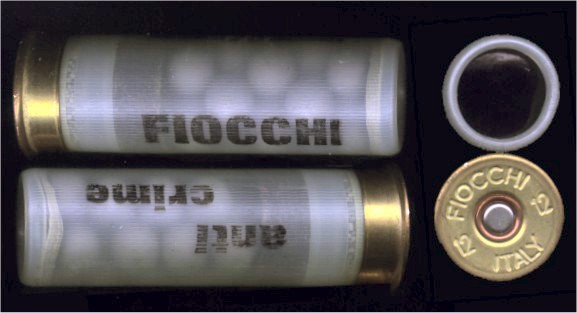
Less Lethal Rounds for Your Shotgun
You can also load your own shells with rock salt (ice cream salt) or you may be able to purchase them already loaded. The salt is very coarse and may even resemble chips of rock. Load the salt just as you would birdshot. The rock salt will cause pain and may even cause minor wounds on bare skin but the salt will not penetrate and cause permanent damage. Less than lethal shells will still make the same noise as other shells.
You can purchase rubber buckshot or single projectiles to load yourself or buy the shells already loaded. You can also get the shells loaded with rubber shot and pepper spray combinations. These are close range shells and have a muzzle velocity of between 280 and 550 Feet per Second (FPS). The effective range can vary between 10 and 50 feet. The pepper spray is effective up to 25 feet in some cases. However, just because they state they are non-lethal the shells are extremely dangerous and at very close ranges and under the right circumstances, the rounds can cause a fatality.
The less than lethal rounds can be used for training and practice. This is ideal for teaching younger adults how to handle loaded weapons without the fear associated with using lethal ammunition. Check with your local municipalities about firing non-lethal rounds inside the city limits.
Less than lethal rounds can be used for crowd control to minimize fatalities and yet provide immediate stopping power. A person hit with a beanbag round will suffer bruising and in most cases, will be incapacitated and out of the fight without suffering permanent damage. Pepper spray rounds are used to disperse crowds and not to necessarily incapacitate anyone for any period.
Some may consider the so-called ferret round to be non-lethal but it is not classified as such. The ferret round is used to deliver tear gas and the rounds are designed to penetrate light barriers such as windshield glass, glass windows in a structure and though hollow core or light wood doors. This allows the delivery of the tear gas from a safe distance using a shotgun. Typically a ferret round would not be available to the public.
The rounds are not to be used against a person or crowd but are designed only to deliver the gas contained inside by penetrating light barriers.
Blondeau Slug for Shotguns, How it Looks Like, Purpose
Most shotgun owners are familiar with traditional slugs but many of them are not familiar with Blondeau slugs. The Balle Blondeau slug, or just Blondeau slug, was actually created during World War II by a man named Pierre Blondeau. When the French declared war on Germany, most of the French resistance fighters were equipped with shotguns. The only problem was the traditional slugs they were using could not penetrate the armor of the German vehicles in order to disable them.
So what Pierre Blondeau did was he created a unique kind of slug made out of non-deforming steel. This slug had the ability to pierce the armor of the vehicles so it could destroy their engines and stop them from moving. If these slugs were shot at a normal target, like a person or object, then over-penetration would occur. In other words, whatever is in the back of the target would also get destroyed along with the target itself.
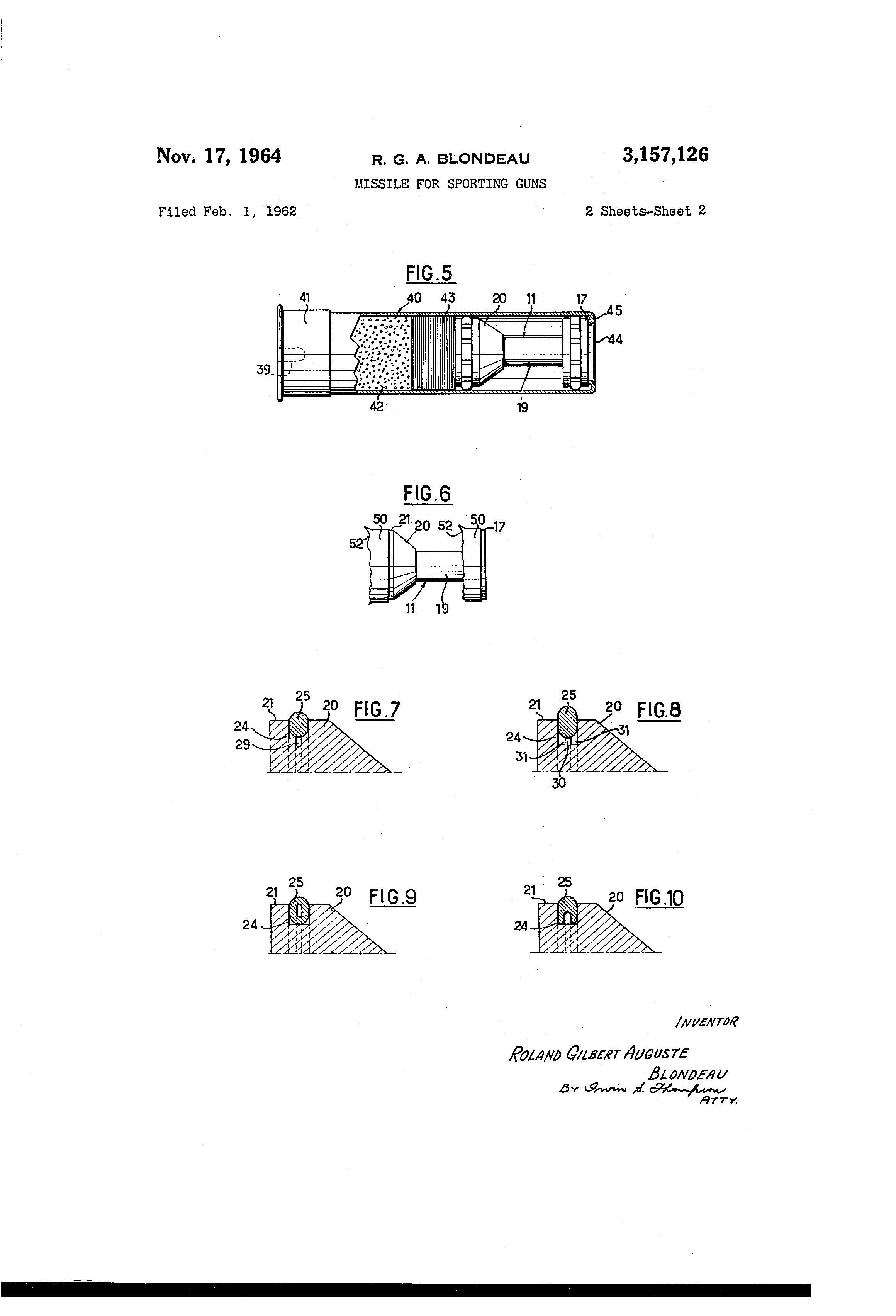
Missile for sporting guns scheme by Roland Blondeau. US Patent US3157126 A.
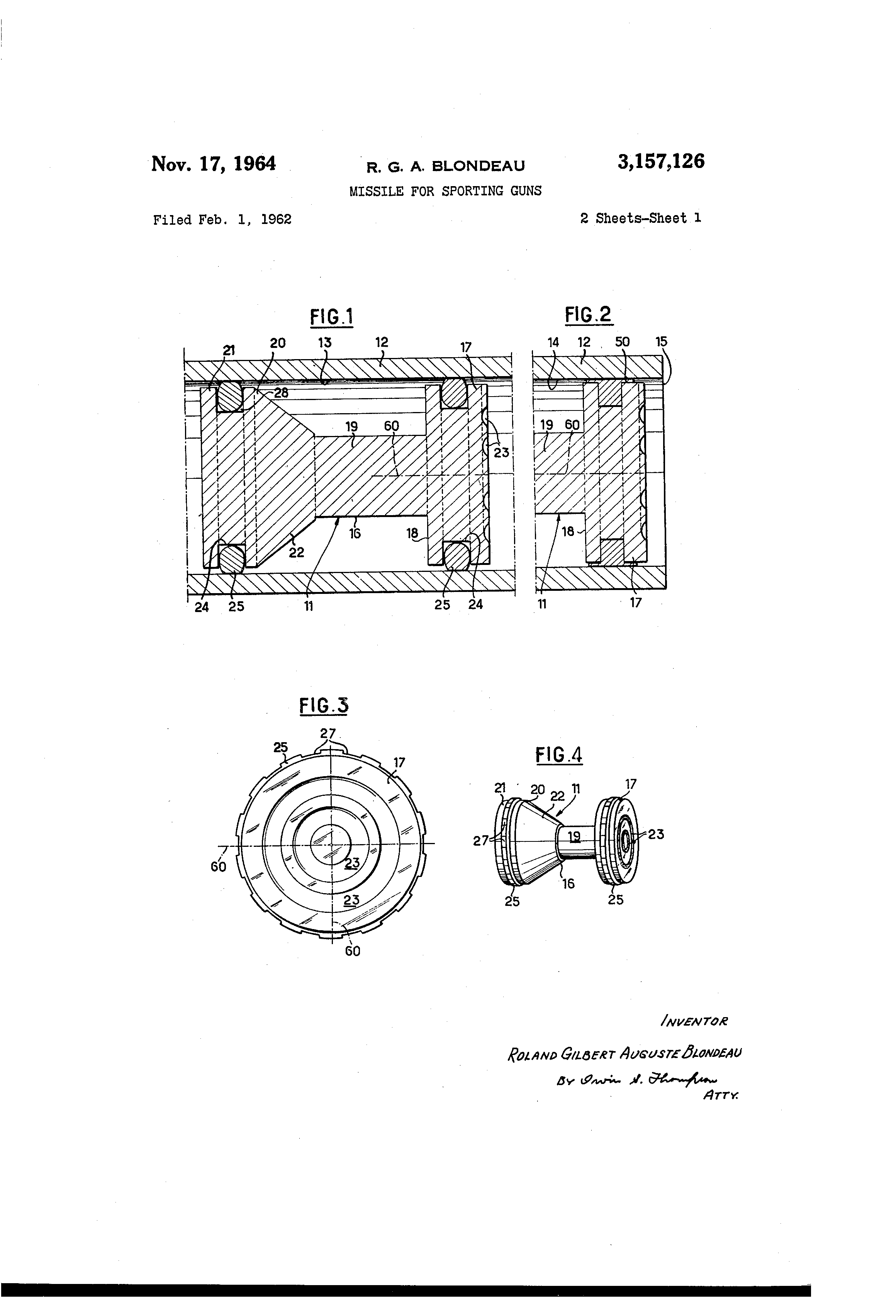
Missile for sporting guns scheme by Roland Blondeau. US Patent US3157126 A.
The main purpose of the Blondeau slug was to disable vehicles by firing in the engine compartment. French resistance have used it because they had shotguns but traditional slugs were unable to stop vehicles.
Pierre Blondeau was one of the French resistance fighters of the “maquisards.” They were basically a group of people who fled into the French mountains so they wouldn’t be drafted into the Vichy France’s Service du travail obligatoire. Thousands of French workers were forcibly enlisted and drafted into this service which provided labor to Nazi Germany. So the French resistance hid and defended themselves with their own weapons. After the war ended, the Blondeau slugs remained forgotten for decades. The Gun Digest yearbook did highlight it in the 1960s but the slug didn’t actually get produced again until the 1980s. This time, they were produced outside of France and nicknamed the French Bobbin Bullet.
If you want to find Blondeau slugs for your shotgun then it will be a real challenge. These slugs have been difficult to get over the years. There are versions of the Blondeau slug available exclusively for air rifles. But the ones made for shotguns are almost nonexistent. The only chance you’ll have of getting them is from a private ammo dealer who can recreate the Blondeau slugs themselves. Some of the original Blondeau slugs from the 1940s have been sold at gun auctions too. But the prices are probably more than what most casual gun owners would want to pay. In the end, you would have no reason to use a Blondeau slug unless you were worried about an invading army storming down your street in tanks and military jeeps. Otherwise, stick with the regular slugs.
Blondeau slug was made of a non-deforming steel and had enough power to pierce an armor.
Shotgun Patterning
Patterning is the density of the shot in a certain area. There are certain variables that determine the shot pattern or density of the shot. What difference does it make? It makes a difference when hunting waterfowl for example, because you need to know what choke setting and shot will work the best. You will need to adapt and change settings based on the hunting situation. You want to make sure your shots are efficient, and it does not take multiple attempts to bring a bird down. Additionally, you do not want to injure several birds by scattering shot everywhere, you want to bring the targeted one down. Your pattern must be dense enough at the range you are shooting at to have the impact needed for a kill shot.
Shot Pattern Testing
Tools and materials needed include a pencil, roll of white construction paper at least 40 inches wide, staple gun or thumb tacks, tape measure, and a piece of string 15 inches long.
Testing your shot pattern allows you to select your choke setting and choose the right ammunition without having to waste time and resources while in a hunting situation. Testing your shot pattern is straightforward but does require attention to detail and some time. You will also need a secure area where you can safely fire your weapon.
Typically, the testing is conducted at 40 yards, which is probably the maximum range for most bird hunting. If you are testing for sheet shooting you can test at 25yards. Test several guns and different types of ammunition to find the best fit.
You will need a pattern board and you can use two posts set in the ground 4 foot apart. Secure a backboard of plywood or even heavy cardboard between the posts so that a 35 to 40 inch piece of white paper can be attached. You want a background that will easily show the shot pattern. Once you have the white paper attached to the backboard measure off 40 yards (120ft), it is 40 yards to the muzzle end.
Take one shot at the 40-yard line, and then remove the sheet and attach another and shoot again. Do this three times. Shoot as you would if you were hunting, in other words, you will not have a bench to shoot from while pheasant hunting.
Once you have the three shot pattern sheets take a pencil and thumb tack the 15-inch piece of string to the center of the shot pattern. Then holding the other end of the string with the pencil, draw a 30-inch circle around the shot pattern. Now simply count the shots inside the circle on each paper to ensure consistency.
Make sure you have noted the weapon and ammunition you used and the choke setting for each pattern. To be consistent make sure you shoot each weapon and ammunition at least three times so you can establish an average pattern.
Having a decoy or even a life-sized cutout of your target bird is helpful, so you can determine that if the shot pattern were on the bird would it hit the vital organs. You have to be able to envision the pattern on the paper hitting your target with enough density to bring the target down.
Recommended Video
Different types of ammunition are effective in different situations and on different ranges, and the best video on this topic was made by Federal Law Enforcement Training Center and called Rounds of Authority: Shotgun Ammunition. You can see it online and I highly recommend it. If you want to know how to use your shotgun in tactical, home-defense or combat situation this information will be extremely interesting for you. In just 18 minutes you will know how to identify different types of shotgun ammunition and what they can do.
Contents:
Conventional, Speciality and Exotic ammunition
Firing characteristics of each type (bird shot, buckshot and rifled slugs) on different distances
Conventional rounds test and penetration effect on Vehicle Door
Birdshot, buckshot and rifled slugs penetration effect on Wood Frame Door
Tests of shotgun ammunition on ballistic gelatin
Conventional rounds penetration effect on soft body armor
Tests of shotgun ammunition on steel plate
Birdshot, buckshot and rifled slugs penetration effect on bullet-resistant glass
Tests of shotgun ammunition on car glass
Tests of shotgun ammunition on laminated car glass
Speciality Ammunition
Flares Rounds
CS Gas Rounds
Smoke Rounds
Dustbusters Rounds
What happens with a wood frame door, car glass and ballistic gelatine when hit by a dustbusters rounds
Exotic Shotgun Rounds
Dragon’s Breath
Dragon Slug
Armor Piercing
Flechette
Buck & Ball
Strung Buck
Flechette and Soft Body Armor
Support Author of the Rem870.com
My name is Vitaly Pedchenko, I am from Kyiv, Ukraine. I started this blog and forum to share information, tips, photos, and advice about the Remington 870 shotgun, accessories, and upgrades.
You can help my family using Patreon website (I have added several additional levels of help but you can choose any of them):
https://www.patreon.com/rem870
or PayPal transfer: info@rem870.com



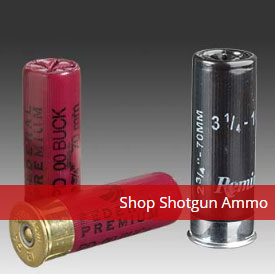
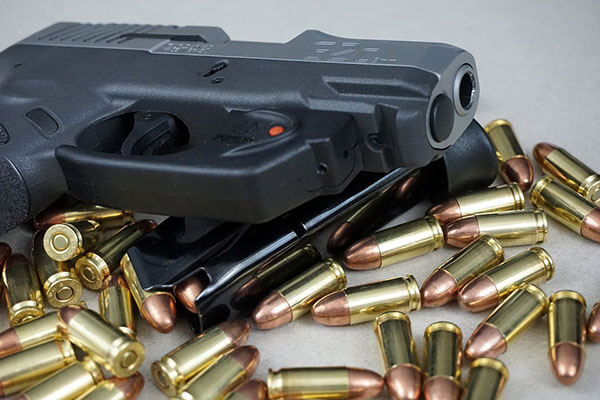
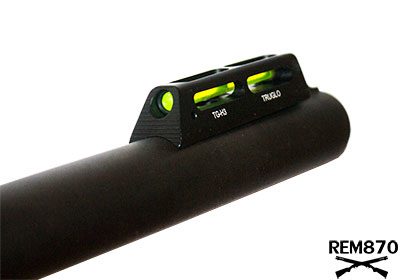

Thanks for this!! Been looking at getting a shotgun and needed some basic info that was not too long in the tooth and filled with tangent examples.
Great work!
Rich, you are more than welcome!
What what happens to the bullet after it’s fired out of the 12-gauge shotgun
A shotgun doesn’t use bullets. It uses shot cartridges. Though this may sound like a technicality, there is a HUGE difference. A bullet has gunpowder loaded into a cartridge and is tipped with a coned head. When the hammer strikes the priming portion of the shell in the center of the cartridge, it causes an explosion of the gunpowder and that hurtles the projectile into whatever you’re aiming at.
While the process is similar for shot cartridges, there are two notable differences; rifles and handguns are centerfire (for the most part, .22s are rimfired) and shotgun shells (IIRC) are rimfire. You can actually have long-winded debates about the pros and cons of each, I leave that for you to look up. The other difference is what happens to the projectile. Bullets stay intact until striking their target; shotgun shells have a plastic coating that dissipates which cause the shot load (wad) to be scattered for wider point of impact. This doesn’t apply, obviously, if you are using a slug instead of shot. (Explained above.)
Overall though, if you don’t understand these basic differences outline above, you really shouldn’t be handling a firearm. One of the biggest causes of accidental misfirings is an improperly loaded projectile. It’s dangerous and can even ghet you killed. These aren’t toys.
“Shotgun shells are rimfire” – are you sure? :)
These days I’m not sure of anything anymore, LOL I took my Hunter’s Ed class (where I obtained a crapton of this info) in the 90’s, so what does THAT tell you? xD
Conclusion: Shotgun shells are NOT rimfire. Maybe. Sort of. IDHK anymore, LOL
P.S.: I provided my email to get the ebook. It didn’t come. :( I’m on Gmail, so that’s likely the reason, LOL (Yes, I checked my Spam. There’s some…interesting…stuff in there that I have no idea how it got pegged for my email address. xD)
Wow! You are wrong on almost every point in your pedantic attempt to “correct” a novice asking a simple question. Well done!
Wow! You are incredibly pedantic and factually incorrect on virtually every single point you made. I’m wondering if you have every fired any firearm based on the silliness you just posted. It sounds like you definitely should get some basic training before you handle a firearm. Talk about irony there.
do they make a 3 inch buckshot shell for 20 gauge???
Yes, they make 3 inch 20 gauge buckshot, I’ve seen it from Remington and Winchester I think.
Thank you. I’ve shot for many years and still get confused.
thank u for the info sir. I have a 16 ga. which is most popular in Belize. 4 ball buck and 3 ball are available for larger game. They work fine.
Excellent review, just bought an 870 tactical and some federal 00 buckshot 9 pellet and hornady critical defense 00 8 pellets high brass shotshells!
Those Hornady shells kick ass! I’m a 870 Express geek, but I got a H & R knock-off I run anything and everything ammo wise through. A little info on the Hornady OO. Buck. The Superperformence, TAP, Critical Defense and Zombie Max (2 Cool..lol) are all pretty much the same shell! No kidding? Same velocity, pellet count, wad, etc. They are just all appealing to different markets. Have different colored plastic parts, different colored markings (again Z Max..black with green lettering.. 2 Cool) and that’s about it. Just some worthless information if you can’t find a particular brand of Hornady OO. buck. Hornady definitely now marketing (good for them) and make Bad-ass ammo. Try some American Whitetail slugs and you will see where they get their slogan!?! F-in’ Awesome slug!!! Enjoy Friend..
I like #4 Buck
I just finally found some Hornady #4! Varmint Express. Had to order it through 1800GunsandAmmo. Killer load.. Patterns real tight. I will say that #4 is probably the best load-out for home defense.? Stay away from the PDX1! That stuff is for hunting monsters!?! Lol, not home defense..
Thanks for the info. Vitaly. Just bought my first shotgun in years (870 Express), since my old .410 went away years ago. The Remington seems a fine gun for me. Your review helps a ton. A good friend wants to take me chukar hunting and I’m trying to learn as much as I can.
Mark, I am happy it was useful for you. I would recommend getting some upgrades, non-MIM extractor is the must have.
Just want to say thank you i really enjoy you’re tips but I have one question I been in law enforcement for over 10 years now in a task force and they use Remington 870 tactical express and I have fallen in love with the shotgun I’m planning in purchasing one for my home and range been that I’m familiar with the 870 express should I stick with it maybe upgrade a few things or what do you recommend thanks you for any ideas you can give me and please keep writing you’re post there excellent
I wish this explained “Field, target, and turkey” loads as well; so all the information would be in one place.
Thank you so much. You answered my questions and some I didn’t know to ask.Great article with alot of info.
Allow me congratulate you! First time I read a text, so much understood! Thank you
11-15-18
Thanks for a great article. Very informative. I came across this while trying to figure out how/if a “salt” load for a shotgun is available. Any comment on such loads? Old geezers (even older than me!) use to mention getting a shot full of salt as kids messing around some farmer’s property. Non lethal but scary as hell to get shot at, I’d guess. Is there such a load on the market?
Most 12 gauges will NOT shoot 3-1/2″ magnums, only a handful of recent ones.
Most will NOT shoot 3″ magnums, only some made in the last few decades.
Most made since the 1920s will shoot 2-3/4″, but some will shoot 2-1/2″
Some from the 19th Century only shoot 2″.
You can typically put any shorter shell in a longer chamber, but pattern may not be optimal. It shouldn’t blow up, though.
Longer, modern, higher pressure shells in old guns can cause a kaboom.
very detailed and very educatinal. thank you very much.
Nice write up. Thanks for sharing
This is outstanding information. Thanks
Hello Vitaly,
I have a Maverick 12 ga shot gun and was sold 2.75, 1345fps, 00 buck shot which I cannot find anywhere now. Can I buy like 1225 fps instead? What is the difference (using for home defense).?
Hello Shelby! The difference is minimal and you may even consider low recoil buckshot because human is easier to stop than wild animal.
I would actually recommend the slower load. You will be just fine. Promise..
Hello, i have a 12g pump shotgun wich has chromed fully choked barrel and its advised not to firing slugs by, but i heard , it is possible to using 16g slug . I want to know : can i use 16g slug with my 12g . How about replacing the 16g in 12g sell.
I survived an execution to the back of the head by a 20 gauge Mossburg with #4 birdshot. The intruder used my own shotgun (ha-ha) which I had loaded as such: birdshot, buckshot, birdshot, buckshot, buckshot, buckshot, buckshot as that is a recommended load arrangement for intruders.
After shooting me with (what he didn’t know) was birdshot, he took off, so he didn’t check my vitals. I survived although permanently handicapped and my face is peppered with holes where pellets exited.
It is still my recommendation that, for home defence, you load your shotgun the way I did. One good peppering with #4-6 birdshot will hurt and scare off your average meth head robber and you will save yourself the legal headache of killing them.
Wow! Glad you are ok. Thanks for sharing that info with us.
Thanks Vitaly!
I came out of it not too bad, not severely handicapped, because luckily not one pellet hit my brain stem (fool’s luck) which controls your basic bodily functions like breathing, heartbeat, motor control.
I just wanted to add my story here as an example of a gun owner who WAS shot…by my own gun…but still think that it is IMPERATIVE to own a firearm for protection. Just lock it up or hide it better than I did. That is my only regret, just leaving it leaning in the corner of the living-room while being upstairs in bed. I got shot because of my own laziness in firearm storage. Not because I own a firearm.
Completely agree with you. Everyone needs to own a gun for protection and shotgun is one of the best tools for that :)
Finally a well explained article !!! I did enjoyed the reading and finally understand shotgun shells.
Thanks.
Thank you! I am glad, it was useful for you!
Thanks for all the good info on shotguns and home defense.
I bought a small 20 gauge almost 40 years ago for home/self defense. I lived alone on the back of 21 acres surrounded mostly by woods and fields. My brother had recently been stabbed 40 times (to death) on his front lawn in a suburb of Chicago (where I grew up), and I felt better protected once I had my 20 gauge.
My parents had already lost one child to violence and I wasn’t going to let it be two.
Question: Can you recommend a website or video on cleaning a gun? Mine has mostly been propped in a corner near my bed and not fired for decades. I’m ashamed to admit it has never been cleaned but I just bought a kit specifically for cleaning 20 gauge, but the instructions are pretty sketchy.
My gun is a very simple one – nothing to take apart.
Thanks,
Gerry Swartz
Gerry, really sorry to hear about your brother. Here is article about shotgun cleaning: https://www.rem870.com/2016/11/28/best-shotgun-cleaning-kit/
What is “wadded” or “captured” shot? I’m looking at a shotgun suppressor for which the manufacturer specifies wadded shot only. But I have no idea what that means.
I actually bought a suppressor which does not have this restriction, but I’m still curious what these terms mean… and I can find no definition on any of the interwebs.
You can find a picture of birdshot in a plastic cup in this article, this is wadded shot which means that it starts spreading later. There are shotshells which contain birdshot without cup and birdshot starts spreading earlier. I think wadded shot is required to not damage the suppressor.
@Vitaly……damn that was the best all around informative shotgun Ammo with different situations allows for an educated decision on ammo depending on your need and situation…. Great Job !!!!
Happy you like it! :)
This was very informative, easy for the novice to understand and well written. Thanks!
I’m glad it was useful for you.
Great article! I have been a fun owner for most of my life. However, my passion has always been semi-auto handguns and AR-15 style rifles. That all changed with my recent purchase. I just bought a Landor Arms semi-auto 12 gauge. It seems to shoot 3” shells just fine, but has trouble cycling 2 3/4 in shells. Is there a “hotter” load for 2 3/4” shells that can match the 1500fps I am getting from the 3” shells? Just an FYI, I tried Winchester 2 3/4 1oz 7 1/2 shot (didn’t cycle) and 3” 1 1/4oz 2 shot (worked fine). Any help would be greatly appreciated since my dilemma is rendering my 19 round magazine (only shoots 2 3/4 shells) useless.
If you use a rifled slug in a smooth bore, will it damage your shotgun? I’ve used buckshot and birdshot, but I’m not acquainted with slugs. However, I’d like to learn and get comfortable with them. I’m really just looking to defend close quarters, BUT the more you know the more options you have, yes? And who knows, if things persist to spiral out of control I may have to hunt with it, so I’d like to have slugs as an alternative.
Do rifled slugs depend on a rifled bore to work, and is there the risk of damage from using rifled slugs in smooth bores?
Thanks you for all this information. This help me alot to learn.
Montréal, Canada, november 2021
I know this is years late to comment on your article. I went on a hunting trip to Pennsylvania when I was probably around 12, so I presume I was handling a 20 gauge. That was the only time I shot a shotgun (came home empty handed). and then several years ago I shot some skeet. It was at an outdoor show and I didn’t ask what type of shot I was shooting. Now with multiple handguns and a long arm, I am thinking at age older than 50 about a 20 gauge (both my wife and I have a crappy right shoulder). We have many family members who hunt and want to go as well, along with some skeet shooting. I found a nice used Mossberg 20 I may pick up, but didn’t want to sound like an idiot going into the shop. Your article has been very very helpful and answered all of my questions. And, no, I will not be one of those rookies who go out and do something stupid. Its just a first time shotgun purchase. Thank you
im sure 7% people who choose fix bayonet is warhammer fans, btw thanks for the info it’s very good for people who don’t own a gun or don’t know much about gun.
This is article covers many aspects of shotgun rounds in great detail and is thus a great reference. Thank you!
My understanding of some of the ‘less lethal’ rounds (lower power loads, rather than the rubber or suchlike) was that one issue with 12 gauge with 00 buck is penetration *in structures* for the shot that misses (partially or completely). My understanding is that the lower powder load leads to less shoot through on some types of building walls. In the article I read about this some years back, some PDs were using 20 ga. rather than 12 ga. just to avoid some of the shoot-through effects.
A friend of mine a PD showed me the information they were sent on Dragonsbreath rounds. They may not be entirely wonderful for your shotgun, but in the demonstration, they destroyed a plate carrier vest. The fabric could not stand the temperatures involved. Of course, 5 – 8 meters might be the maximum useful range. And if used in darkness or at night, I expect you would be dazzled for a while if you didn’t have some sort of eye protection from the bright light. And I wouldn’t want to use it indoors in any place I didn’t want set on fire…
Thanks again for your great information.
WOW! this was the best article ever referring to ammo for shotguns! I can see a lot of effort went into informing new gun owners whats going on like myself! truly awesome thank you for you time n efforts!!
Thank you!
Great article. A wealth of information.. I just thought I knew about shotgun ammo! Thanks.